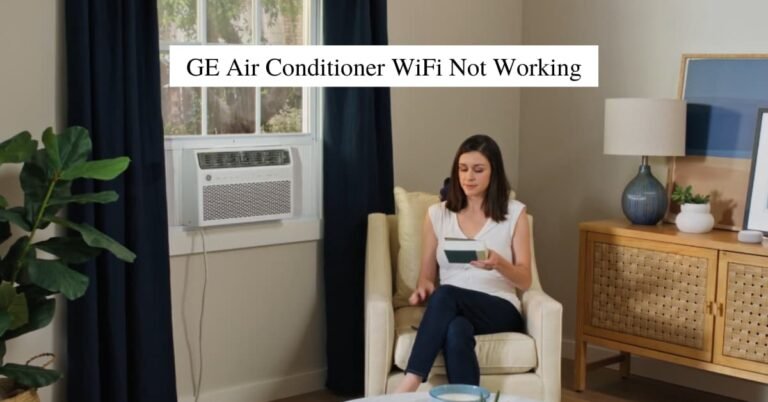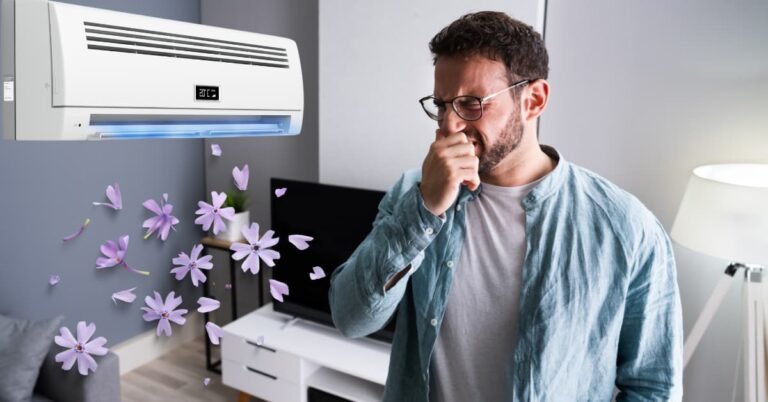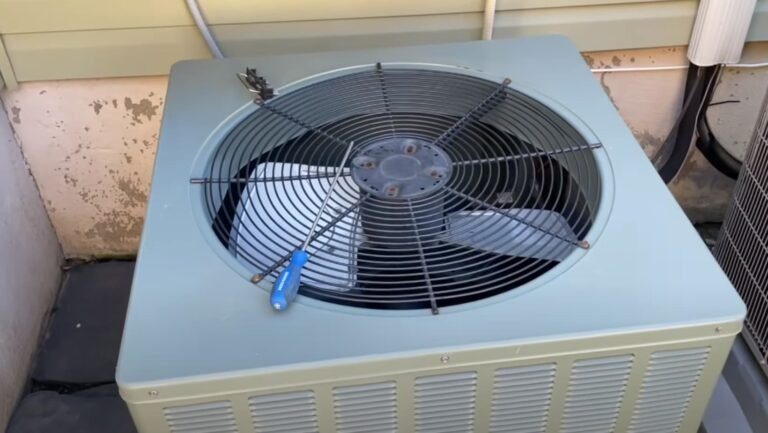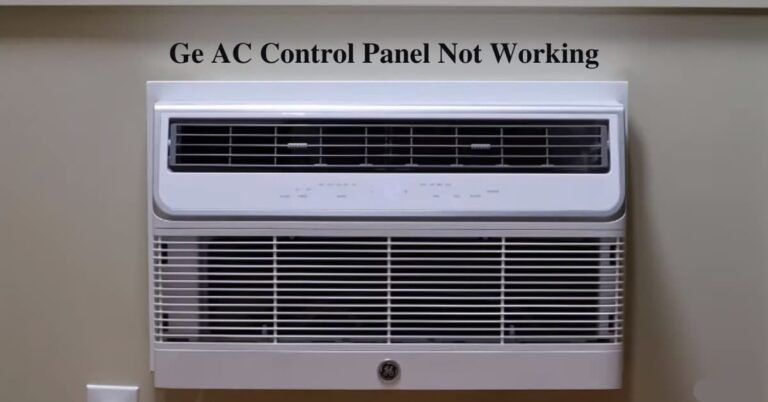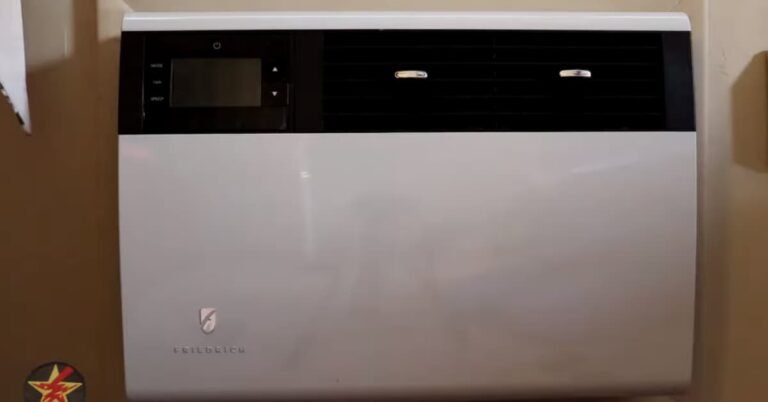GE Window Air Conditioner Turns On and Off Repeatedly – How To Fix
When a GE window air conditioner continuously turns on and off, it can be indicative of underlying issues. This problem is commonly experienced by users, and it is important to understand the potential causes and solutions.
Several factors can contribute to this repetitive cycling behavior. One possible reason is a clogged or dirty air filter, causing restricted airflow. Another culprit could be a faulty thermostat or temperature sensor triggering frequent on/off cycles.
Also, low refrigerant levels or a refrigerant leak may disrupt the system’s normal operation. Loose electrical connections can also lead to intermittent functioning. Regular maintenance, including cleaning or replacing the air filter and checking electrical connections, can often resolve these issues.
Seeking professional assistance might be necessary if problems persist. Addressing these concerns ensures optimal performance and reliable cooling from your GE window air conditioner.

GE Window Air Conditioner Turns On and Off Repeatedly
If your GE window air conditioner is turning on and off repeatedly, it could be a sign of underlying issues.
Several potential causes include dirty air filters, faulty thermostats, low refrigerant levels, and loose electrical connections. It is essential to address these problems to ensure the proper functioning and optimal performance of your air conditioner.
Each problem below is solved step-by-step.
Thermostat Settings
When a GE window air conditioner repeatedly turns on and off, one possible cause is incorrect thermostat settings.
Inaccurate temperature settings or a faulty thermostat can disrupt the cooling cycle, resulting in frequent cycling of the unit.
It’s essential to ensure that the thermostat is set correctly and functioning properly to resolve this issue.
Solution:
1. Check the thermostat settings: Verify that the temperature is set to the desired level and is not set too close to the ambient room temperature.
2. Calibrate or replace the thermostat: If you suspect a faulty thermostat, consider recalibrating it or contacting a professional technician to replace it.
3. Test the thermostat: Use a separate thermometer to compare the temperature readings with the thermostat’s displayed temperature. If there is a significant discrepancy, the thermostat may need adjustment or replacement.
4. Ensure proper thermostat placement: Make sure the thermostat is not exposed to direct sunlight, drafts, or other sources of heat that can affect temperature readings.
5. Perform a reset: Reset the thermostat to its default settings and reprogram it according to the manufacturer’s instructions.
Inadequate Size
If a GE window air conditioner is undersized for the room, it may struggle to cool effectively, leading to frequent on/off cycles.
Choosing the right-sized air conditioner is crucial for optimal performance and energy efficiency.
Solution:
1. Calculate the cooling capacity needed: Measure the room’s square footage and consider other factors like insulation, ceiling height, and sun exposure. Use a BTU (British Thermal Unit) calculator or consult an HVAC professional to determine the appropriate cooling capacity required.
2. Purchase a properly sized air conditioner: Based on the calculated cooling capacity, select an air conditioner that matches or slightly exceeds the recommended BTU rating.
3. Install the air conditioner correctly: Follow the manufacturer’s instructions to install the air conditioner properly, including sealing any gaps and ensuring proper weatherstripping.
4. Test and adjust settings: Once installed, adjust the thermostat to the desired temperature and monitor the air conditioner’s performance to ensure it cools the room effectively without frequent cycling.
5. Seek professional assistance if needed: If you are unsure about calculating the cooling capacity or installing the air conditioner, consult an HVAC professional for optimal sizing and installation.
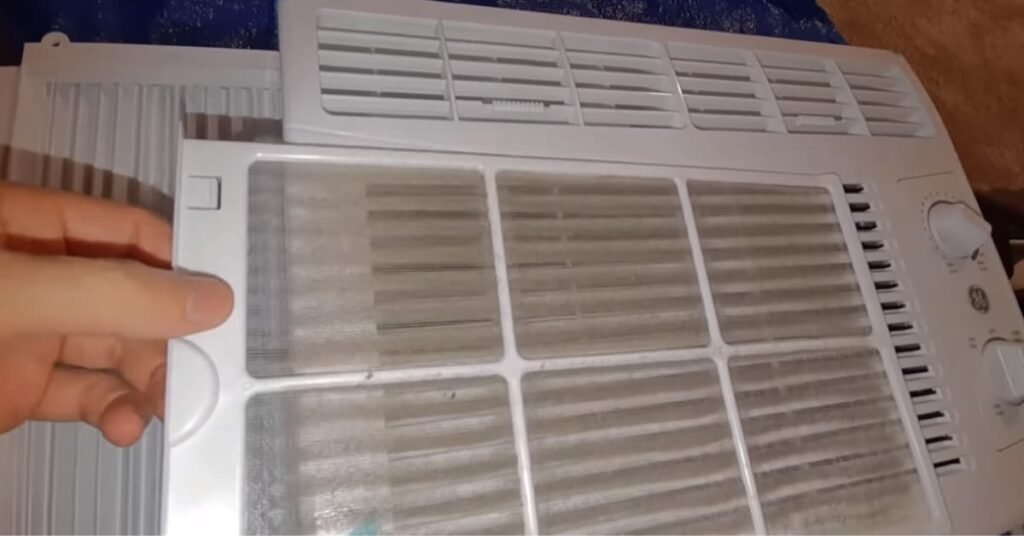
Dirty Air Filter
Another common cause of a GE window air conditioner cycling on and off repeatedly is a dirty air filter. When the air filter becomes clogged with dust and debris, it obstructs proper airflow, leading to overheating of the unit.
Regular maintenance of the air filter is crucial to prevent this issue.
Solution:
1. Locate the air filter: Refer to the user manual to find the air filter’s location in your specific model.
2. Turn off the air conditioner: Switch off the power to the unit before proceeding with the filter cleaning.
3. Remove the air filter: Take out the air filter from its designated slot by following the instructions provided.
4. Clean the filter: Use a vacuum cleaner or rinse the filter with mild soap and water until all dirt and debris are removed. Allow it to dry completely before reinstallation.
5. Reinstall the air filter: Insert the clean and dry air filter back into its original position, ensuring it fits snugly.
6. Routine maintenance: Regularly inspect and clean the air filter at least once every month or as recommended by the manufacturer.
Refrigerant Leak
A refrigerant leak in a GE window air conditioner can disrupt the cooling cycle, causing the unit to cycle on and off repeatedly. Low refrigerant levels can lead to inefficient cooling and potential damage to the compressor.
Solution:
1. Identify signs of a refrigerant leak: Look for indicators such as reduced cooling performance, hissing sounds, or oily residues around the air conditioner.
2. Turn off the air conditioner: Switch off the power to the unit to prevent further damage.
3. Contact a professional technician: Refrigerant handling requires expertise, so it’s best to contact a certified HVAC technician to diagnose and repair the leak.
4. Leak detection and repair: The technician will use specialized tools to locate the refrigerant leak and repair it accordingly. This may involve replacing damaged components, such as hoses or coils.
5. Refrigerant recharge: Once the leak is fixed, the technician will recharge the air conditioner with the appropriate amount of refrigerant to restore optimal cooling performance.
6. Regular maintenance and leak prevention: To minimize the risk of future leaks, schedule regular maintenance with a professional and ensure proper care of the air conditioner.
Faulty Compressor
A faulty compressor can cause a GE window air conditioner to cycle on and off frequently. The compressor is responsible for pressurizing the refrigerant and plays a crucial role in the cooling process.
Solution:
1. Identify signs of a faulty compressor: Symptoms may include unusual noises, failure to start, or inadequate cooling.
2. Turn off the air conditioner: Switch off the power and unplug the unit before attempting any repairs.
3. Contact a professional technician: Compressor repairs or replacements require specialized knowledge and skills, so it’s best to consult a professional HVAC technician.
4. Diagnosis and repair: The technician will examine the compressor for any faults, electrical issues, or mechanical failures. They may perform repairs or recommend compressor replacement if necessary.
5. Compressor replacement: If the compressor is irreparable, the technician will replace it with a new one. This involves removing the old compressor, installing the new one, and properly connecting all necessary components.
6. System testing: After the repair or replacement, the technician will test the air conditioner to ensure it operates smoothly and cools effectively.
Electrical Issues
Electrical problems, such as faulty wiring or tripped circuit breakers, can cause a GE window air conditioner to cycle on and off repeatedly. Proper electrical connections are essential for the unit’s smooth operation.
Solution:
1. Check power supply: Make sure the air conditioner is receiving adequate power by checking if it is plugged in correctly and that the circuit breaker is not tripped.
2. Inspect wiring connections: Turn off the power and carefully inspect the air conditioner’s wiring connections. Ensure all connections are secure, without any loose or exposed wires.
3. Test voltage levels: If comfortable working with electricity, use a multimeter to measure the voltage levels at the electrical outlet and the air conditioner’s wiring connections. Consult an electrician if the voltages are outside the normal range.
4. Reset the circuit breaker: If the circuit breaker has tripped, reset it and observe if the air conditioner functions properly. If it trips again, there may be an underlying issue requiring professional attention.
5. Seek professional assistance if needed: If you are uncertain about electrical repairs or troubleshooting, it’s safer to consult a licensed electrician to diagnose and resolve any electrical issues.

Is It Normal For A Ge Window Air Conditioner To Cycle Frequently?
No, it is not normal for a GE window air conditioner to cycle on and off frequently. Excessive cycling indicates an underlying problem that needs attention. Here’s a clear and concise explanation of the issue and how to address it:
Frequent cycling of a GE window air conditioner is not typical and suggests an underlying issue that requires attention. This problem can result from several factors, including incorrect thermostat settings, an undersized unit, refrigerant leaks, a faulty compressor, or electrical problems. Resolving these issues will restore the air conditioner’s proper functionality and improve its performance.
To address this problem effectively:
1. Check the thermostat settings to ensure they are correct.
2. Consider the cooling capacity of the air conditioner and ensure it is suitable for the room size.
3. Detecting and repairing any refrigerant leaks by consulting a professional technician.
4. Have the compressor inspected by an HVAC professional for any faults or defects?
5. Verify the wiring, connections, and circuit breakers to address any potential electrical issues.
How Do I Clean Or Replace The Air Filter In A Ge Window Air Conditioner?
Cleaning or replacing the air filter in a GE window air conditioner is essential for maintaining its performance and ensuring clean air.
Follow these steps to clean or replace the air filter:
1. Turn off the air conditioner: Before working on the unit, switch off the air conditioner and unplug it for safety.
2. Locate the air filter: The air filter is typically located behind the front grille or in a slot on the side or back of the unit. Refer to the user manual for precise instructions.
3. Remove the filter: Slide out the filter from its designated compartment carefully. If it is a reusable filter, proceed to cleaning. If it is disposable, continue to step 5.
4. Clean the filter: If the filter is reusable, gently rinse it under running water. Use mild soap if necessary. Allow it to air dry completely before reinstallation.
5. Replace the filter: If it is a disposable filter, discard it and replace it with a new one. Ensure the new filter matches the specifications recommended by GE.
6. Reinstall the filter: Slide the clean or new filter back into its original position, ensuring a snug fit. Double-check that it is correctly aligned and securely in place.
7. Power on the air conditioner: Plug in the unit and switch it on. Your GE window air conditioner is now ready to provide clean, cool air.
Conclusion
When a GE window air conditioner turns on and off repeatedly, it can indicate several issues. This frequent cycling may be caused by a dirty or clogged air filter, which restricts proper airflow. A malfunctioning thermostat or a faulty temperature sensor could be triggering the unit to cycle on and off at short intervals. Additionally, low refrigerant levels or a refrigerant leak can lead to erratic operation. It’s also important to check for any loose electrical connections.
Regular maintenance, such as cleaning or replacing the air filter and ensuring proper electrical connections, can help address these issues. If problems persist, seeking professional assistance is recommended to diagnose and resolve the underlying cause.

